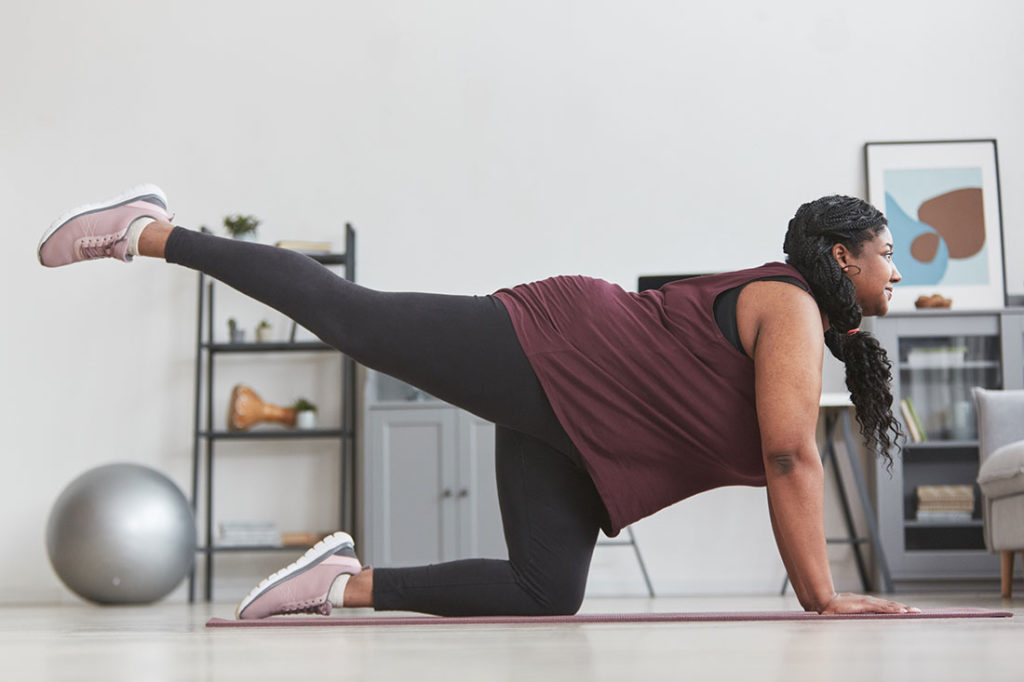I couldn’t keep up. I was embedded with Army National Guard soldiers as they hiked across hilly terrain in Arkansas, and they were going so fast I had to stop and go back to the start/finish line to wait for them to return.
It was the first and, so far, last time I bailed on an assignment because I was physically incapable of completing it. It was a long assignment, and the hike was only a small part of it, so I still got the story. But I knew I had to change.
Slowly but surely, over several years, I got in better shape. I made incremental improvements to the point where now, I’m in just-in-case shape—as in, just in case an editor says yes when I pitch a story about going on a 250-mile bike ride or completing a Tough Mudder obstacle course event, I can be reasonably certain that I can actually do it.
My best work days invariably come after a rigorous morning workout. But stronger work days and just-in-case assignments are not why I exercise. That’s too reductive. The benefits are far broader than that.
Setting and sticking to an exercise routine is crucial to your well-being. The evidence is indisputable and crosses all lines of race, ethnicity, gender, age, shape and size. You will feel better, sleep better, work better, live longer. The evidence of negative repercussions from a sedentary life is equally indisputable and deeply troubling. Every health issue you can think of gets worse if you are physically inactive.
I know your objections. You’re busy. Your life is chaotic enough as it is. You can’t add another thing to your to-do list. You are not alone there. There’s no delicate way to put this: Do it anyway.
Here are tips on how to build a fitness routine that works for your unpredictable solopreneur life.
“Do the things that bring you joy.”
So says Kawan Karadaghi, a gym owner, entrepreneur and host of the ValueVerse podcast, which covers entrepreneurs, influencers and thought leaders.
Exercise is not a one-size-fits-all endeavor. One person loves to lift weights, whereas a second finds peace in yoga while a third wants to bear crawl up and down soccer fields all day.
The act of moving, rather than the specific movement, is the key. You are far more likely to keep doing it—whatever it is—if you enjoy it. “Every individual is on their own journey. Taking ownership of what you want to do and doing it well is what matters,” Karadaghi said.
Take advantage of the freedom of making your own schedule.
Most experts on this topic will encourage you to set a time to work out, preferably first thing in the morning, and stick to it. Broadly speaking, that’s good advice. But for me, there are many days where that won’t work.
One of the blessings of the solopreneur life is that our schedules are our own. We’re not chained to our desks, and there’s no boss throwing side-eye from the corner office as she keeps track of what we do and when we do it.
You can start work when you want. You can stop working when you want. You can take breaks when you want. Take advantage of that freedom.
Find your tribe.
You already work alone. You don’t need to work out alone, too. Aside from being fun, working out in a group provides accountability that’s lacking when you’re by yourself.
Finding a group in your area should be easy. Check your local recreation center, gyms, Facebook groups and neighborhood organizations. There are two nationwide, free boot camp groups, F3Nation.com (a men’s group of which I am a member) and FIAnation.com (for women), that are worth looking into.
Eliminate barriers to entry.
You don’t want to drive to the gym. You don’t want to pay the membership fee. You don’t have to do either one. Jon Finkel, a veteran fitness writer whose newsletter, Books & Biceps, offers weekly workout tips, is devoted to the gym in his garage.
“Whether it’s a full-blown Iron Paradise like The Rock or a pride-and-joy garage gym like yours truly, putting all the equipment you need for a workout a short walk from your bed will make it super convenient to toss weights around for an hour or get in a 30-minute dumbbell circuit to start or end the day,” he says.
Use what you have.
That’s the advice from the experts at the Heart and Vascular Center at Penn’s medical school. Sit-ups, pushups, burpees, jumping jacks—those are all free and you can do them anywhere.
Be creative.
I often embed exercise into my day. I regularly schedule brainstorming hikes and always come back with a notebook full of ideas and several hundred calories burned. Sometimes I put my computer and lunch in my backpack, strap a lawn chair to it, hike to an overlook high above the Missouri River, and write from there.
Along those same lines, I made up a term: exer-errands. I cut the grass with a weight vest on or walk to the grocery store carrying my backpack.
Dr. Cindy Lin, associate director of clinical innovation for The Sports Institute at UW Medicine, offers other fit-it-in-while-you-can suggestions, such as take regular dance breaks and sit on a yoga ball instead of a desk chair, which will improve your balance.
Set realistic expectations.
This is especially important for solopreneurs. We set high goals and strive to achieve them. That’s a tough habit to break. But break it you must, especially in the beginning.
Karadaghi calls this the Low-Entry Point principle. “Go back to the routine that worked for you and divide the entire workload by half or more until the entry point is appealing,” he says. “For example, if your workouts were usually one hour, commit to 20 minutes. Still too long? Fifteen minutes too long? Ten minutes, etc., until you find what is feasible and that you can happily commit to and sustain.”
And it’s not just the time, it’s how you fill it. Especially if you haven’t exercised in a long time, it’s crucial that you be honest with yourself. At least at the beginning, how fast you run or how much weight you lift are irrelevant.
“The takeaway: Set a low bar for yourself and achieve that daily,” Karadaghi says. “This creates habit, habit becomes routine. It allows for efficacy and a sense of accomplishment which helps the exerciser feel as though working out is achievable.”
Photo by SeventyFour/Shutterstock





